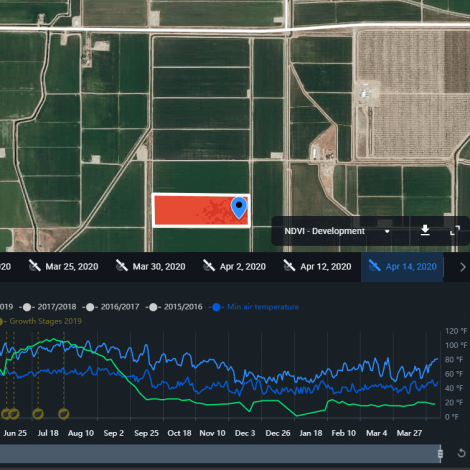The age-old practice of crop rotation on farmlands is undergoing an upgrade into the digital age.
The first attempts at crop rotation date back to Ancient Egypt and Rome, with the idea that rotating crops on farmland increases yields compared to a monoculture system. Monoculture in this case is a single type of crop that is cultivated in one zone repeatedly year after year.
Crop rotation is the practice of periodically switching the species of crop grown on each tract of land. Good rotation methods take into account climate, soil conditions, aspects of the crops grown and other factors that can maintain healthy soils and improve yields. Typical cycles span three to seven years. The ancient Romans employed a system of “food, feed, fallow” in which they divided their farms into three zones. In one zone they planted food crops such as wheat. In another zone they planted feed crops for livestock such as barley. And the third zone they did not plant, allowing it to go fallow for a season.
An updated version of the Roman rotation is the “leaf-root-legume” system. This rotation has a scientific basis in the fact that one plant releases macro-elements taken by another. In particular, edible roots provide potassium necessary to legumes, so when you schedule legumes after roots, you eliminate potassium inputs. In their turn, legumes fix nitrogen from the air to the soil as fertilizer for plants.
The options are different on every farm, taking into account unique needs, technical possibilities, soil types, climatic conditions, etc. Thus, an instance of a successfully practiced sequence is wheat-sunflower-fallow.
Five advantages to rotational farming to save costs and nature
Farms across the globe have practiced crop rotation, as its benefits are significant. These are five of the most important.
- Optimization of input costs. Farmers save on agro-chemistry, applying it only when necessary.
- Reduction of fertilizers. As plants provide vital elements themselves, farms don’t require chemical fertilizers, or require them less. Furthermore, when fields serve as pastures, grazing animals supply organic manure.
- Eliminated application of insecticides and herbicides. Insects damage their victim crops, so alternative plants do not attract the pests typical for other species. If a monoculture is cultivated for a long period of time, the chronic usage of pesticides and herbicides creates an excessive concentration of chemicals.
- Care for the environment. Crop rotation can add nitrogen to soils naturally. Plants only partially take up the nitrogen in manufactured fertilizers and the rest can run off and pollute waterways.
- Soil improvement. Plant roots ‘till’ soils at different levels, preventing erosion. Monoculture degrades the soil by consuming vital elements. But rotated crops can consume and contribute nutrients in a complementary fashion.
The role of online agricultural platforms in making decisions
Crop rotation can be highly efficient, and there are many successful schemes all over the world. Managing the practice manually, however, is challenging. Modern innovations facilitate farmers’ efforts.
Satellite monitoring simplifies farm management. Online software that uses satellite imagery such as the service that EOS Crop Monitoring provides has advantages.
-
- Traces the historical background of the region and analyzes conditions in the area
- Tracks vegetation indices and stages of maturation
- Reports weather patterns
- Recommends sowing and mowing times
- Records the field history
- Provides maps, charts and plans
Contemporary mobile and other software applications are high-performance management tools that efficiently schedule farmers’ time, finances and energy. Experts agree that the current state of agriculture is not sustainable. As the world is facing growing threats, agriculture has to adapt and change. “A systemic transformation is needed at an unprecedented speed and scale,” Sarita Nayyar, Chief Operating Officer of the World Economic Forum writes in the report System Initiative on Shaping the Future of Food Security and Agriculture (pdf).
Implementing technology-driven solutions such as satellite data can be the change that is necessary.
Where to start?
Alongside sustainable agriculture, precision agriculture is a great achievement of digital farming. Its key purpose is to help farmers manage risks and make urgent decisions on time. It enables farms to boost yields and improve quality while minimizing the use of chemicals and other potential pollutants.
Online platforms have specifically designated tools to help make balanced and well-informed decisions. They are reliable assistants to combat agricultural challenges with maximum competency and minimum effort.
About the Author
Igor Komarnitskiy is the marketing coordinator at EOS Crop Monitoring. EOS Data Analytics is a private company located in Menlo Park, CA, USA, that provides a cloud-based analytical platform with AI for satellite imagery processing.

